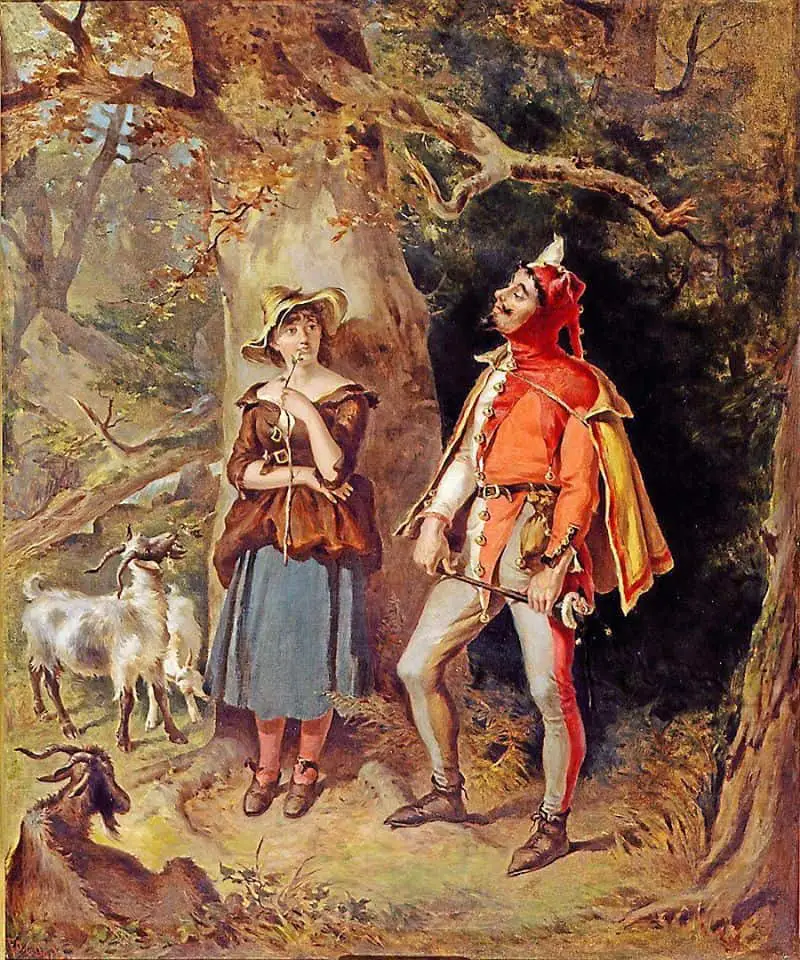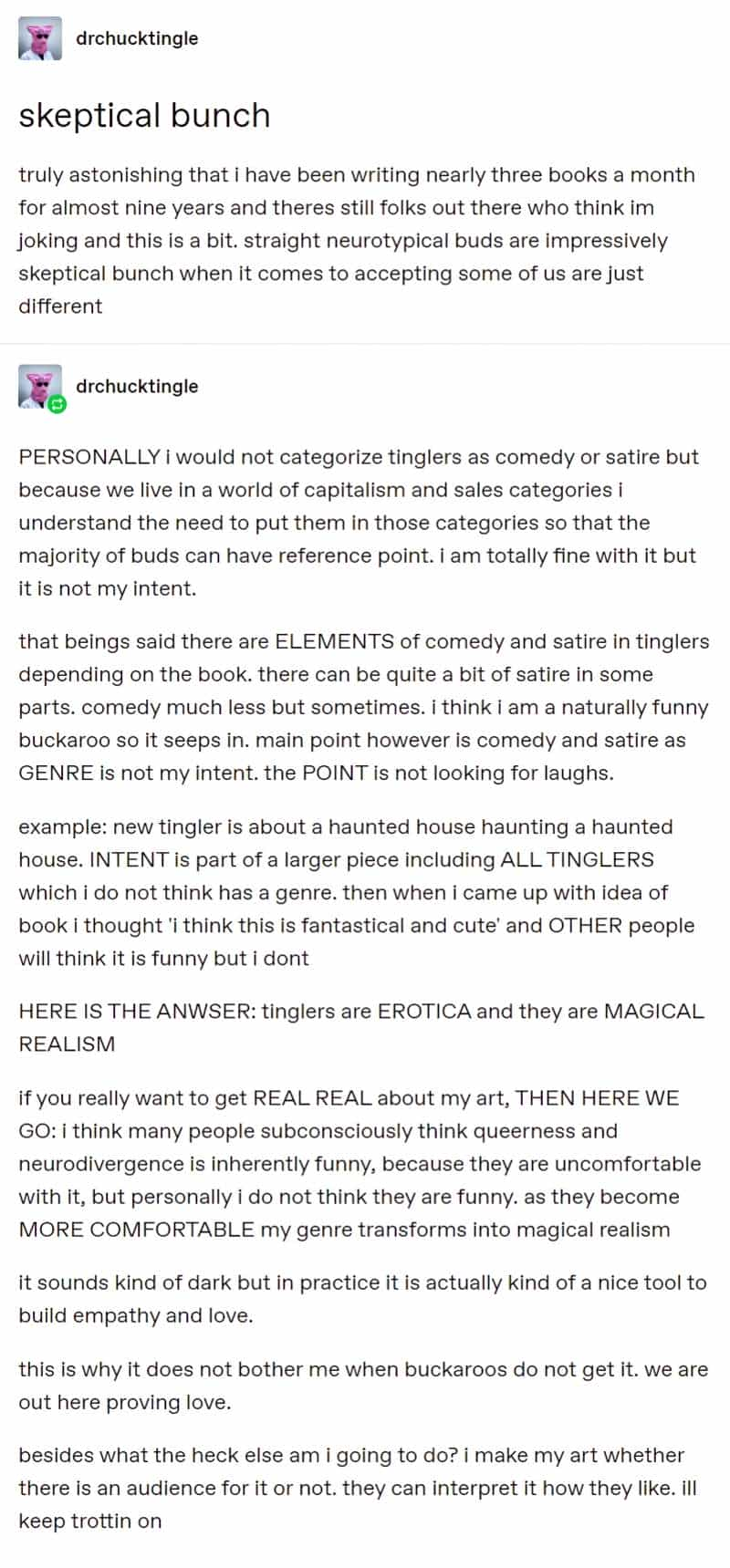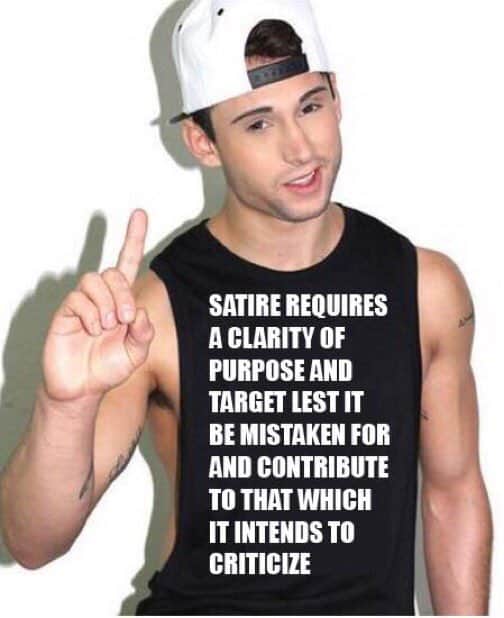What’s the difference between satire, parody and farce? What about the difference between satire and irony? I frequently conflate these terms, so I looked up some definitions and examples.
SATIRE
Satire that lacks a clarity of target/intent is just support, whether that’s intended or not.
– Real satire punches up.
– The US dealt with the banality of evil, that murderous fascism didn’t require anything extraordinary, by cartoonifying Nazis.
Iron Spike on Twitter
Satire is the comedy of beliefs, especially those on which an entire society is based.
Satire has been around for as long as complex human hierarchy has been around — probably since the age of agriculture. Satire was flourishing at the epoch of the Renaissance. Satire was the most important genre of the epoch. This makes sense — the Renaissance was all about change, and satire is all about mocking the old and ushering in the new.
But the following five forms of satire were most common during the Middle Ages (all related to folklore):
- The fool satire — popular also throughout Europe from the 15th to the 17th century. Starred the fool or jester who represented the shortcomings, vices, and grotesqueries of contemporary society. Mr Bean would be a modern example. The fool tries to get away with stuff but is found out (unmasked). See also the IT Crowd.
- The rascal satire — often interchangeable with the fool satire. But the rascal is not so much ridiculed and unmasked. He serves as a touchstone for the surrounding world. He is trying to gain entrance to organisations and estates of the medieval world.
- The satire of greediness and drunkenness — often depicted by a character with a fat belly. This character is linked to fertility, rebirth and universal excess. Greedy characters have two sides to them (as in any carnivalesque tale) — the mocking of greed and idleness are combined with a positive and joyful accentuation of the very material-corporeal principle.
- The estate satire — the three estates were the clergy, nobility and peasantry. (Women weren’t included — women were a separate class.) Estates satire praised the glories and purity of each class in its ideal form, but was also used as a window to show how society had gotten out of hand.
- Satirical sirventes — ‘service songs’ — a genre of Old Occitan lyric poetry practised by the troubadours, written from the perspective of servicemen.

The satirical element also found expression in other genres of medieval literature, including in church drama and street performance.
Persistent Forms: Explorations in Historical Poetics by Ilya Kilger et al
Comedy in general tends to say something pessimistic about the nature of humankind, and satire is the most effective way of transmitting that message.

SATIRE AND MAIN CHARACTERS
Unlike straight narratives, the satire does not invite reader identification with a ‘hero’ or ‘main character’:
Although it is certainly unlikely that all cognitive narrative simulations require the perspective of a protagonist, most probably do, because fiction is governed largely by human considerations (ethical, behavioural, psychological, and so forth), and because the protagonist provides the means of narrative construal and thus knowledge. Of course, not all literature invites or encourages readerly involvement; this is particularly the case with satire and comedy, because it is distinctly unnatural to identify with the subject of ridicule.
‘Who Was It If It Wasn’t Me?’: The Problem of Orientation in Alice Munro’s ‘Trespasses’: A Cognitive Ecological Analysis
IS IT REALLY SATIRE OR IS IT JUST DIFFERENT FROM WHAT YOU’RE USED TO?

PARODY
Parody is a form of satire that imitates the characteristic style of a particular writer, musician, artist, speaker or genre using deliberate exaggeration for a comic effect.
(Though the epoch of the Renaissance was all about satire, it was also full of parody.)
PASTICHE
Like parody, pastiche takes elements from work which has come before and remixes them into a new work of art.
So what’s the difference between pastiche and parody?
Pastiche doesn’t offer commentary or criticism of what came before. It really only takes the elements and presents them. Gothic literature is often described as parody, and sometimes it is, but often it is simply pastiche.
Fredric Jameson has defined how we think of the word pastiche and describes the difference between parody and pastiche like this:
Pastiche is, like parody, the imitation of a peculiar r unique, idiosyncratic style, the wearing of a linguistic mask, speech in a dead language. But it is a neutral practice of such mimicry, without any of parody’s ulterior motives, amputated of the satiric impulse, devoid of laughter or of any conviction that alongside the abnormal tongue you have momentarily borrowed, some healthy linguistic normality still persists. Pastiche is thus blank parody, a statue with blind eyeballs…
Fredric Jameson
FARCE
Think of ‘farce’ as ‘broad satire’. And by ‘broad’ we mean satire that isn’t very subtle. A farce will make use of certain over-the-top techniques:
- physical comedy
- unlikely situations
- over-the-top gags
When we’re not talking about comedy, ‘farce’ describes a real life situation which started off serious but has now devolved into ridiculousness.
FURTHER READING

When satire too closely approaches real life, to the point where the audience isn’t sure they are watching satire or plain old representation of immorality, then this is known as Poe’s Law. Critics of The American Office said that The Office writers too regularly achieved Poe’s Law.
Header photo by Scott Webb

